2022 Q2 Industry Outlook and Portfolio Project Progress
Author: 0xSoros Translators: Diamond; Evelyn: Maxwell
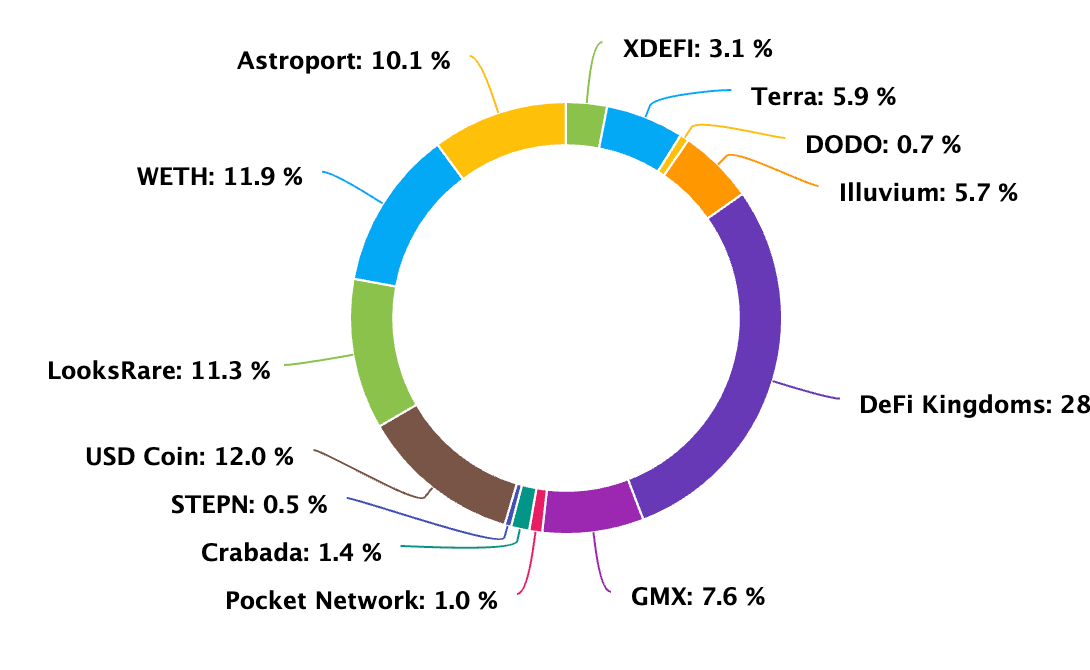
0xSoros March Portfolio (Non-investment proposal )
- About DeFiKingdom, Subnet and Cross-chain, Harmony, the future form of GameFi, AXS Killer
DeFi Kingdom(Hereinafter called DFK) is Avalanche’s first key Subnet project, which will deploy a version of DeFi Kingdom Crystalvale on Avalanche in the form of DFK Chain.
DFK Crystalvale will have its own token CRYSTAL. After the release, the liquidity mining incentive will be started with AVAX/JEWEL/CRYSTAL Single currency/Dual currency LP form. Avalanche will give $15 million worth of AVAX tokens to incentivise DFK Crystalvale. JEWEL will act as a generic Gas fee for the DeFi Kingdom multi-chain ecosystem and turn on the burn and deflation mode.
You’ll see the impact on the price of JEWEL after the DFK Crystalvale launched by late March. The team’s incentive design for the LP pool will partly affect JEWEL. The team confirmed the core direction of using JEWEK as DFK Eco-Universe’s main currency, so the launch of DFK will drive the price of JEWEL up.
The DFK team is more conscientious. They had many opportunities to extract users but chose to grow with the community. The team rejected the invitation from several exchanges (Before the game is fully developed, it is a kind of overdraft consumption behaviour).
Given that the team has not yet developed a matchmaking mode such as PVP, it cannot be denied that at the moment DFK is still a DeFi in the guise of a GameFi. There is no institutional early entry in DFK, nor low-cost lock-up chips from institutions. So there is no sustained selling pressure on DFK; What is important is that within the last three months, the DFK team has pushed through, regardless of the loss of users, not developing games and sticking to its own Subnet and cross-linking. This strategic trade-off took courage.
Most of the JEWEL is still locked at present (The reward of LP are locked mostly) and will be unlocked in July this year, with 2 years linearly vesting.
JEWEL is uncertain because the DFK’s game has not yet been developed. It’s very significant that the deployment of DFK on Avalanche this time is to establish the orientation of multi-chain GameFi. It is definitely not to use a single game for valuation, but the metaverse, which would be more appropriate. Then the time problem, let the development team continue to build the game so that DFK could go much further.
For the Public blockchain of Harmony, its biggest achievement is the DFK project. DFK is the only game available in the town of Harmony. Due to the performance problems of Harmony, players who have played it know that Harmony is highly laggy. Since JEWEL has been established as the main currency of the DFK universe, but on a Harmony chain with bad performance, will it be a hidden problem in the future?
The GameFi must be integrated of multi-chain, DeFi and Game in the future, which means DFK is undoubtedly the leader. As DFK is the most powerful competitor of AXS. I believe the market value of DFK will catch up with AXS within 2-3years.
- About LUNA, Decentralizing stable currency, (Stable coin, DEX, Lending) of Public chain, Appchain, Agreement theory and the essence of Public chain
The strongest project in the public chain is LUNA over the last month. As the market bottomed out in the short term, the price rebounded 100% back to ATH and broke a new high.
We speculated that all projects in the LUNA ecosystem serve the stable coins UST and LUNA, and UST and LUNA will use Vampire Attack for all ecological projects. One reason for this impression is that some of the tokens of the LUNA ecological project will be airdropped to Users who stake UST and LUNA.
In a strategic direction way, LUNA’s core strategy is to describe the grand story of “Decentralised Stablecoin” around the stable currency UST. The mechanism of burning LUNA to forge UST allows LUNA holders to gain price growth in the process of increasing the share of UST. In essence, it allows players to enjoy the bonus of increasing the market share of stable coins.
We can get a conclusion from the experiments of algorithmic stable coins 2 years ago, such as BASIS/ESD. Although these generations of algorithmic stable coins return to zero, the reason for the crazy speculation at that time because of the upper limit of the coin market is large. Once a certain algorithmic stable coin reaches a strong consensus among a wide range of user groups, which may be hundreds or thousands of times of investment return.
LUNA eventually won out over a series of algorithmic stable coins. It has succeeded, at least for now, but it remains to be seen whether it can continue to grow its market share and retain its leading position in the future.
From USV’s famous “Fat Protocol” theory, which laid the foundation for the industry, to Placeholder’s “Thin Protocol, Fat Application”, to Cosmos’ “App Chain”, protocol theory has gone through seven or eight years of iteration.
LUNA is a very typical App Chain protocol. LUNA is ostensibly a public chain, but in reality, it is an application with a stable coin at its core. Some say that LUNA is worth investing in because it is both a public chain and an algorithmic stable coin. What about the priority of the two narratives of public chain and stable coin. Personally, I thought the kernel was the stable coin and the public chain was just a shell.
In other words, any application that gains a broad user base can later make its own public chain. Axie is a typical example, after becoming the leader in the GameFi field, the team chose to leave Ethereum and build their own Ronin public chain to form a closed-loop ecosystem. This is partly because of Ethereum’s high fees and stretched performance, and partly because of the greater benefits of building their own public chain, of course.
Therein lies the reason why the public chain is a grand narrative. Everything can be a public chain, as long as you have enough confidence and capital: users, funding, cash on hand.
We can vaguely see, from Cosmos First proposed APP Chain The concept will lead a trend in the future, namely APP Chain Protocol. And as a public chain, Just need to appear in the ecosystem 1-2 Popular apps, The public chain itself can obtain great value. The public chain is consistent with APP Chain Narrative.
In terms of the composition of the public chain, stable coin, DEX, and lending are the three foundations of the public chain. For LUNA, the stable coin has been a historically unprecedented success, so thinking along, DEX and lending would be the two main investment opportunities for the LUNA ecosystem.
Astroport has made great progress recently as LUNA’s first DEX. LUNA/UST/ANC and other eco-core assets have been added to the liquidity on Astroport and trading volumes are breaking new highs, currently ranking in the Top 5 in terms of daily trading volume on the DEX. This is, of course, thanks to LUNA’s recent strong comeback.
In retrospect, the previous speculation about the LUNA/UST bloodsucking eco-project was a little premature. Eco-projects evolve in a gradual manner. The development of eco-projects is gradual, and the public chain’s triplet is a natural law of historical development, then it just needs to be given more time. Astroport as DEX is tied with Osmosis in terms of daily trading volume, while FDV has a 5x difference. Its presence also allows non-LUNA native players such as Ethereum to access the liquidity of the core assets of the LUNA ecosystem without going through a centralized exchange (converting USD to UST via a cross-chain bridge and then accessing Astroport to buy them). In summary, Astro is undervalued. $10 billion in FDV is a reasonable valuation.
- About the continuous competition, fake data of TVL, critical criterion of public chain’s TVL
The competition of the public chain is a long-term process of competition, and the increase or decrease is visual data of the public chain’s TVL.
The public chain’s TVL rises automatically, and the main currency of the public chain is mostly PoS assets. Most of the standard money is staking which leads the TVL to rise along with the assets. But for this part, we all know the data is not real. After kicking out of this part, the net flow of stable coins besides the protocol is the real growth of the public chain‘s TVL.
Terra’s TVL has increased by 70% in the past month, partly due to the inflow of TVL withdrawn by Fantom (Andre Cronje quit DeFi), also the growth of the protocol, which is mainly due to ANC’s 20% annualized stable coin deposit rate. The deposit rate of mainstream DeFi protocols is much lower than 20%, which means this requires a lot of UST subsidies, and the subsidies can only last for more than one year. As for TVL, ANC has slightly surpassed AAVE and both of them with a valuation of US $2.5 billion.
Unfortunately, Fantom didn’t win the lottery since Solidly’s campaign would attract the attention of the entire industry. However, AC’s quit caused Fantom’s price and TVL to drop sharply. The Founder decide whether a public chain will be successful or not, and AC is an idealist and emotional person. That is no surprise: It’s just a bit of a pity for Fantom, the momentum has been built for so long and just a damp squib.
The overall performance of ETH’s TVL is stable, but due to the steady growth of the TVL of LUNA/AVAX and other protocols, the proportion of ETH’s TVL is declining. The continuous decline of the TVL share of Ethereum is strong proof that the multi-chain era is coming.
Luna’s TVL increased significantly when the market fell, and the price-performance showed a certain negative correlation with the market, which was a bit of risk aversion. Given the Billions Of Trillions dollar field of “Decentralized Stablecoin”, it is possible for TVL to catch up with ETH in 2 or 3 years.
- About Cosmos and Polkadot, Cosmos Ecological projects OSMO/EVMOS, The advantages of Appchain tokens
In the past 4 or 5 years, Cosmos and Polkadot’s reviews have been competing. During 2018-2019, One of the most frequently discussed topics is Cosmos and Polkadot which is better, and who is the winner eventually.
The inspiration of these two cross-chain projects to me is that judging projects must over some time because everything has been changing dynamically. In the fast-developing Crypto industry, the status of projects at different stages is really different. It is clear that Cosmos is gaining ascendancy after 2022, and we can see Polkadot’s TVL dropped by 70% in a year, which is a bit surprising.
The advantages and disadvantages of Cosmos and Polkadot have been talked about by the industry in the past few years. Needless to say, It is worth mentioning that Cosmos’ bonus to community users is also rich in the value of airdrop tokens obtained by ATOM alone, such as Osmo / Juno and other ecological projects. At the same time, most of Cosmos’ ecological projects have no private chips, but the share of airdrop is huge, giving most of the benefits to community holders. In terms of giving back dividends to the community, Cosmos is obviously much better than Polkadot.
Although LUNA and Cosmos are both Cosmos ecosystems, they have been relatively fragmented in the past few years. Since the introduction of UST on Osmosis this year to get through the two systems, the relationship has become slightly closer. Do Kwon, the founder of LUNA, has also stepped up the call for the Cosmos ecological currency since this year.
Why Cosmos’ DEX Osmosis is successful, here is the point of view of “DittoJo Brr”:
“Compared with the design of traditional DeFi governance tokens, App Chain’s NativeToken “is an underlying asset”, and has greater design space and imagination in Value Capture, which can integrate some Ponzi designs to achieve two purposes at the same time: 1. Improve the security of the network 2. Realize value capture. The App Chain model is superior in terms of Value Capture.
I’ll list a few projects that are more suitable for this Narrative: LUNA, the best Ponzi Tokenomics + strong consensus + financial resources. OSMO Stake, Lp Bond, Superfield Staking, and each coin comes with OSMO trading. RUNE node double pledge + LP and RUNE forced pairing + synthetic asset pledge. All three have found their own market segments with excellent economic models.
Cosmos’s trump-card project-OSMO/EVMOS/ATOM (personally thinking). EVMOS has recently been delayed due to network upgrades but expects a wave of “EVM Chain” craze after listing. As a competitor in the same field, Moonbeam is one level behind EVMOS in terms of consensus, users and community. And Monbeam’s private placement chips are too much, the unlock time is too long and the cost is too low.
- About Avalanche and Subnet, the possibility of becoming a GameFi Chain
Avalanche will release Subnet at the end of March while giving $300 million to incentivise the Subnet ecosystem. The Subnet is similar to the Cosmos Application chain. It has a stand-alone secure mode and can make its own validation node. The launch of Subnet will further enhance the industry consensus on the App chain narrative. Meanwhile, Subnet will lead the second wave on Avalanche, with Crabada and DFK being the first two projects to benefit from Subnet’s eco-incentives. The breakdown of Avalanche’s funding for Subnet’s eco-projects shows that Avalanche is betting heavily on GameFi. Avalanche is therefore likely to become a public chain specialising in GameFi in the future.
For me personally, Avalanche is a public chain that I have seriously neglected. It has nowhere near the attention of Cosmos/Polkadot/Solana and started out arguably supported solely by the aura of Professor Gun. In terms of the underlying architecture, Avalanche’s design is very elegant and efficient, no less than Cosmos or Polkadot. At this stage of its performance, it’s hard to tell who’s better between Avalanche and Solana. And it is superior to Solana in terms of community, with a hint of leaving Solana behind.
- About Solana and its decadent flaws, derivatives DyDx and GMX, and ways for public chains to break out
Solana is slightly declining in 2022, mainly due to the fact that most of Solana’s previous eco-projects were dominated by Alameda and the projects’ token economies were mostly designed for low liquidity, high valuations and endless low-cost post-IPO sell-offs. That would be in keeping with SBF’s style. The dividends left to the community players are little. It also slowly loses fresh traffic over time. The Solana eco-project is far less generous to the community than Cosmos, Avalanche and LUNA. However, the SocialFi project StepN on Solana has recently started a wave of independence with its unique application scenario.
Solana’s underlying architecture lends itself naturally to derivative projects. Previous speculation was that there would be one or two on-chain derivative projects on Solana that would rival DyDx. Embarrassingly, however, derivatives themselves have a number of limitations. In that derivatives have a particularly high user threshold and are destined for a niche group of professional traders, so existing derivatives programs have retreated to structured products to suit the masses of fool-proof operations. The downside of structured products, on the other hand, is that they can make users lose money in extreme market conditions, and once structured means that players can only choose to bet unilaterally. Therefore the derivatives track has yet to be further explored and broken through.
The current Product Market Fit product is an order book style on-chain contract product. Two typical projects are DyDx and GMX. GMX is a fully community-driven, non-institutional funded, fully on-chain derivatives contract project. The idea of GMX is somewhat similar to that of DFK. Both are looking to gain new users by deploying on multiple chains. The deployment of GMX on Avalanche in recent months has proven to be successful and effective. Growth has been achieved in various data indicators such as transaction volume, number of users and revenue share.
But GMX also has some bottlenecks. The first is the problem of pulling in newcomers. GMX is currently a more reasonably valued state and is saturated with users. The number of daily active users per chain remains stable at 300-400, and subsequent attempts to further increase the number of users will inevitably require the means to pull in new ones. The team is already working hard on the “ user promotion” function. The second is just how many contract players on the CEX can be pulled in. Changing user habits is extremely difficult. The third is the project’s ability to develop iterations, which is so far optimistic, although the project’s core developer and founder are anonymous, which is a layer of uncertain risk.
In the future, an important criterion for public chains to break through is to become stronger in a certain niche, and public chains that simply copy Ethereum will not have a chance to survive. The development path of public chains has shifted from the grand blueprint development of ETH to a single point breakthrough to become the leader in a niche and then continue to expand horizontally and vertically. As explained above, the proposition of a public chain is essentially a flashy shell that can be applied to any project, so that everything can be a public chain. In short, the idea is “First APP Chain, Then Public Chain”.
- About Web 3.0 Middleware protocol POKT
As Web 3.0 Multi chain infrastructure, POKT has always been focused. The data shows that its income exceeds a lot DeFi Top protocol, but it takes the high inflation obtained by the pledge node as the agreement income so it may exaggerate too much. On the other hand, POKT’s protocol does have a practical use. As POKT official partner, Harmony has always been at the top of the POKT’s list, which largely slowed down the load of Harmony official RPC. Surprisingly, the number of relays for Polygon stay on POKT has exceeded Harmony in a month. The growth is fast, and POKT is still a middleware protocol that cannot be ignored since the practical adaption. The current flaw is to reduce secondary, and POKT’s odds are obviously very attractive as a competitor of Alchemy and Infrua.
- About APE Coin Launching, NFT Aggregator, Opensea’s competitor-Looksrare, PFP The third wave
After Ape Coin launched, BAYC acquired Punk and Meetbit which ignited the PFP market again. A series of BAYC’s solid capital operations made other PFP overwhelmed. The overall valuation of Ape listing is $10 billion, so there is no great opportunity for Level 2. A series of capital operations of Yuga Labs made PUNK/Meetbits/BAYC The holder/investors / The main companies happy to earn money, and the final loss is the player who bought APE in the secondary market. But if this part of the money can be a certain proportion of reflux to the PFP market, which can also be regarded as injecting funds into the picture market in a disguised form by issuing coins. Azuki/Doodles/CloneX The rise of blue chips more or less illustrates this recently. In summary, the issuance of APE tokens brought more money into PFP, and it is likely to open PFP The third wave.
It is worth mentioning that NFT Aggregator Gem as well as Opensea’s competitor: Looksrare. The NFT’s greatest function of the aggregator is to make Sweep NFT Floor It’s easier to shop with minimum price, which is convenient for large funds to buy those pictures. The aggregator routes to two NFT exchanges, OpenSea and LooksRare. Therefore, the issuance of ape and the NFT aggregator gem together contribute to the trading volume of LooksRare. In addition, Looksrare’s updating of the product is awesome.
Similar to the LooksRare project(Haze attack), in the beginning, it says the story of “ Community version of XXX”. Once you want to seriously develop products and make a good project, thousands of people would come. We all know the leading projects of such segment field as OpenSea/MetaMask takes 99% of the market share. How difficult it is for competitors to catch up. From the perspective of investment, OpenSea and MetaMask are valued at $20-30 billion, such big projects make players no profit so choose the community.
The trading share of Looksrare has been rapid growth gives the possibility, at the same time, the incentive of trade mining may lead it to the next round of positive spiral, also it’s not competitive at all if not consider of that. In the meantime, mining is no guarantee of success. There is no alternative but to accept it, so please don’t criticize it anymore.
- About the change in position
Buy in $xDEFI, open a position on LUNA/ASTRO. ASTRO is the Alpha Bet of LUNA, and LUNA is the base position (similar to ETH). It will continue to increase. Keeping DFK’s position, long-term bet covering Avalanche Subnet hotspot and GameFi multi-chain ecosystem (targeting 1-2 years to catch up with AXS). The POKT position was not added, the original position lost 75% and was not added, further observation. The GMX position remained unchanged, which pledged at 35% APY and continues to be held. APE and StepN liquidated for a short wave. Opened LOOKS position. Cleared BTRFLY/RBN/GEL position.
- About BTC/ETH broad stock returns, broad short-term market movements, and changes in market structure
Holding BTC and ETH alone for the long term will yield significantly lower returns over the next 5-10 years. Lower here means comparing future returns to those of the previous two cycles. Although I’m an amateur at macro judgments, I’ll be bold enough to make a prediction. The future trend for the broader market is a short to medium term high-level wide oscillation, as well as a long term spiral upwards. This is the premise of the industry’s blossoming, stabilising the broader market, followed by the rest flying around. To a certain extent, this is also a reflection of the fairness that “lying flat does not yield excessive excess returns”.
The change in the structure of the market is that there is so much idle money or loafing money left within the market that it can manoeuvre at any time and ignore the broader market, which is a difference from the last cycle. While most of the profit-taking from the last round pulled out of the ring, most of the profit-taking from this round remained in the field and so they’re able to make things happen at any given moment.
- About the Web3 project, the cross-link bridge and the final form of the Interchain
The various Web3 projects are also hotly debated, but without exception, the biggest problem with these tool projects is value capture. Personally, I think the components of a good project are intuitive and steadily growing data, points that can cause people to FOMO, and a good tokenomics model. Typically speaking LUNA, the data growth of UST is intuitive and the story cap for decentralised stable coins is simply too high, coupled with Ponzi’s economic model.
The Web3 project, which comes in all shapes and sizes today, is basically unable to form an economic flywheel and Ponzi, so to speak, alone. I think there is still a need to give this track some time. There is no bad project, only the wrong time.
The cross-chain bridge, which was previously favourable, has recently changed somewhat. I don’t think the cross-chain bridge captures the maximum value, and the cross-chain Dapp is probably the ultimate form and beneficiary of the cross-chain bridge, simply put, the multi-chain AAVE is, and the cross-chain bridge already covers it. The cross-chain bridge itself is like a DeFi derivative, which has been trying to catch fire for years but has not been able to do so, and is still essentially a tool, unable to create an effective Ponzi and flywheel effect.
As for the cost of crossing the two bridges, it is predictable. To put it bluntly, the volume of transactions is as high as the fees can be, and predictable revenue means there is no imagination to speak of. This is the downside of the tool class. Future Hop/Connext, including the recent Stargate, will also face this dilemma. Not to mention that the cross-chain bridge is where the Hack is most frequent. For example, Wormhole can do full compensation, after all, they are rich. But if you don’t have the money to pay for a cross-link bridge, getting hacked once means death. I would therefore not consider buying into any cross-chain bridge projects under the current thinking.
- About Ethereum, excess returns and personal expectations
Personally, I would not hold too much Ether, which has grown into a large asset class and is not as cost-effective as the new cottage coins and not as stable as USD. Ethereum is a very poor asset in terms of asset appreciation. It means that Ethereum is no longer able to capture super-strength Alpha, note the emphasis on super-strength here, let’s say 100x return. And holding Ether itself for the long term is infinitely the right choice.
Because for society as a whole, having the capital to hold large-cap BTC and ETH is itself a way to live a nourishing petty-bourgeois life, without any more effort or fuss. For most people, being able to lay flat with hodling BTC or ETH is a dream that is beyond the reach of most people in their lifetime. So-called “ Your life, my dream”. It is therefore a personal choice, depending on individual circumstances.
In any case, remember: within 100 years of this century, players in the Crypto industry, without doubt, are the luckiest generation.
1.资讯内容不构成投资建议,投资者应独立决策并自行承担风险
2.本文版权归属原作所有,仅代表作者本人观点,不代表本站的观点或立场
您可能感兴趣
-
韩国比特币溢价率重返 2% 以上水平
深潮 TechFlow 消息,4 月 20 日,据Bitcoin.com报道,韩国比特币溢价率重返2%以上水平。据Cryptoquant.com数据显示,4月9日比特币在韩国短暂低于全球均价后,过去十
-
 一文了解以太坊 Pectra 升级:各项 EIPs 全解析
一文了解以太坊 Pectra 升级:各项 EIPs 全解析原文:Pectra: Ethereum’s Next Major Upgrade 作者 : Tanay Ved,,Coin Metrics 编译 :GaryMa,吴说区块链除了对原文的编译外,本文还补
-
韩国代理总统:韩国将不会反击美国关税
深潮 TechFlow 消息,4 月 20 日,韩国代理总统韩德洙近日在接受英国《金融时报》采访时表示,韩国不会"反击"美国的关税政策,理由是韩国对华盛顿负有历史责任。韩德洙强调,美国在朝鲜战争后为韩
-
Semler Scientific:一季度因 BTC 投资账面亏损 4180 万美元,仍持有 3,182 枚 BTC
深潮 TechFlow 消息,4 月 20 日,据CryptoPotato报道,医疗诊断公司Semler Scientific在4月15日提交的SEC文件中披露,2025年第一季度因比特币投资产生约4
-
 一周代币解锁:4个项目解锁价值约1400万美元代币
一周代币解锁:4个项目解锁价值约1400万美元代币本周仅 4 个代币解锁,其中解锁最多的为 VENOM,解锁价值约为 757 万美元。Venom项目推特:https://twitter.com/VenomFoundation项目官网:https://
-
今日加密货币市值前100代币涨跌:CORE 涨 20.17%,OM 跌 3.86%
深潮TechFlow消息,据Coinmarketcap数据,今日加密货币市值前100代币表现如下,涨幅前五:Core (CORE) 涨20.17%,现价0.6937美元;Artificial Supe
-
 Galaxy 加密借贷市场报告:当 DeFi 增长 959%,CeFi 却仍未走出 FTX 阴影
Galaxy 加密借贷市场报告:当 DeFi 增长 959%,CeFi 却仍未走出 FTX 阴影原文标题:The State of Crypto Lending 原文作者:Zack Pokorny,Galaxy Digital 研究员 原文编译:Aiying complianceGalaxyRe
-
 厦门检察:男子盗卖虚拟货币获利160多万元被判11年
厦门检察:男子盗卖虚拟货币获利160多万元被判11年PANews 4月19日消息,据厦门检察公众号,某陈姓男子盗卖虚拟货币获利160多万元被判11年,据悉陈某编造账号掉线的谎言,借此骗取受害人的各类验证码,通过实时验证码持续将洪某账户内的虚拟货币秘密转
- 成交量排行
- 币种热搜榜
 Pepe
Pepe UXLINK
UXLINK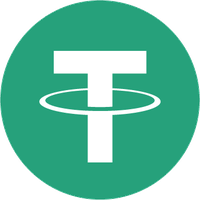 泰达币
泰达币 比特币
比特币 以太坊
以太坊 Solana
Solana USD Coin
USD Coin First Digital USD
First Digital USD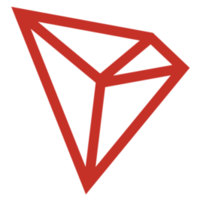 波场
波场 瑞波币
瑞波币 Aergo
Aergo 狗狗币
狗狗币 Avalanche
Avalanche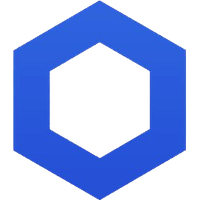 ChainLink
ChainLink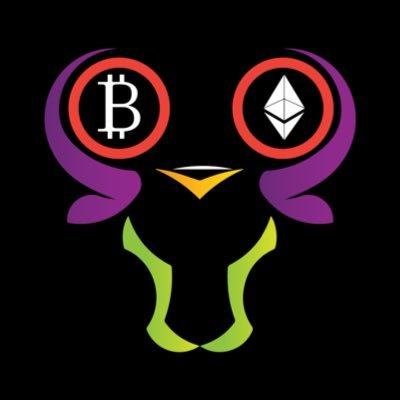 Next Generation Network
Next Generation Network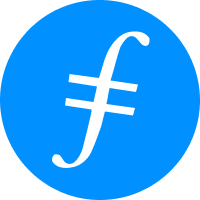 FIL
FIL ACH
ACH EOS
EOS CRV
CRV AR
AR CAKE
CAKE RAY
RAY FTT
FTT HT
HT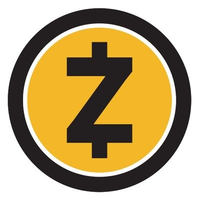 ZEC
ZEC UNI
UNI